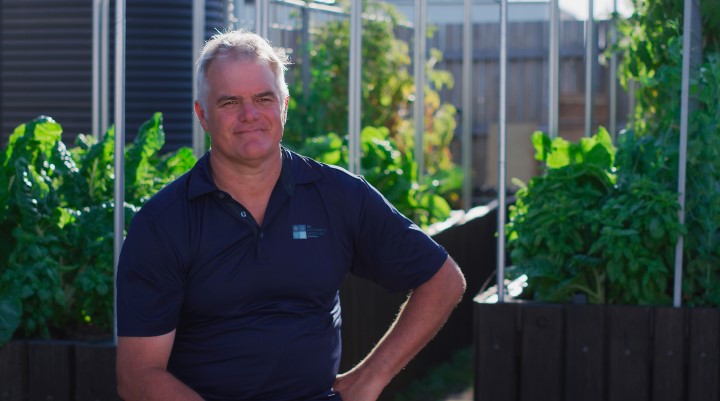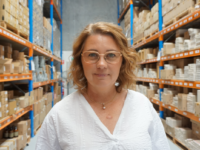Enterprise: The Sustainable Landscape Company
What makes them special: With its parent company, Australian Ecosystems, TSLC collects seeds for, grows and plants several million indigenous plants a year to restore waterways, wetlands and urban biodiversity.
Brendan Condon, Director of The Sustainable Landscape Company (TSLC) believes the landscapes around our homes and communities are where we experience and interact with the elements, our families and friends, and our natural world. “They should be designed as a place where people find exercise, social contact, friendship, relaxation, peace, nature and shade – and where we can even harvest nutritional food,” Brendan avers.
TSLC designs and constructs innovative, nature-friendly, productive landscapes for households, businesses and communities. These landscapes feature the full range of elements, including timberwork, decks, structures, paving, garden beds and shade trees. “We then go further to design and create landscapes that integrate rainwater harvesting, productive water-efficient food gardens, urban habitat, water features, recycled and circular-economy materials, shading and urban cooling,” Brendan explains.
“We hope to design and build hundreds of urban farms across our cities.”
The company works for a wide range of clients in a variety of environments, including residential landscapes, rooftops, hospitality venues, parks, school landscapes, playgrounds, and restored waterways and wetlands. TSLC is a division of award-winning ecological restoration company Australian Ecosystems, and the team includes qualified landscape architects, trade-qualified landscapers and horticulturalists, who employ a large, modern fleet of plants and equipment.
“Over our 25-year history, we have worked in the delivery of hundreds of larger landscapes for large housing developers, government and commercial clients,” Brendan says. “We saw the opportunity to design and construct innovative bespoke landscapes that integrate with sustainable buildings, homes and architecture to create compounding benefits. The built environment and liveability of our homes can be enhanced by water-efficient, biodiverse gardens, productive urban farms, shade trees, rainwater harvesting and the creation of corridors of nature and biodiversity amongst our homes and neighbourhoods.”
With Australian Ecosystems, TSLC collects seeds for, grows and plants several million indigenous plants a year to restore waterways, wetlands and urban biodiversity. It designs and creates urban farms for homes, schools and communities that assist people in growing food in the middle of our cities. This cuts food bills, reduces food kilometres to food metres, and cycles food and green waste back into food production. “We work hard to source sustainable and circular-economy materials in our projects and to eliminate waste in our operations,” Brendan enthuses.
TSLC’s offices run on 100 per cent renewable energy and the organisation is looking forward to moving beyond fossil fuel use by electrifying its vehicle fleet as soon as it can identify four-wheel-drive vehicles and trucks with adequate range and performance.
Brendan recently announced a collaboration with sister company Biofilta to build compact, water-efficient farms that can be set up in any urban space. TSLC designs urban farms with rainwater harvesting, composting, orchards, seating, social spaces and shade structures and uses Foodcube wicking beds that Biofilta makes in Melbourne. These wicking beds make the urban farms highly water efficient, raised off the ground and user-friendly.
“We hope to design and build hundreds of urban farms across our cities,” Brendan says. “We are also looking forward to working with private landholders who are looking to restore waterways, biodiversity, habitat, shade and shelterbelts, and wildlife corridors on their properties.”
With this in mind, parent Australian Ecosystems is investing heavily in TSLC’s nursery so it can increase its supply of high-quality, cost-effective indigenous and native plants for environmental restoration enthusiasts and professionals.
This article first appeared in issue 40 of the Inside Small Business quarterly magazine
















